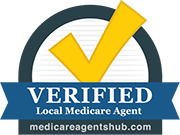
Navigating Prescription Drug Plans (Part D)⚕️💊
Understanding the intricacies of Medicare Part D can help you choose the best prescription drug coverage for your needs. Medicare Part D provides essential prescription drug coverage and is available to anyone enrolled in Medicare. Here’s a guide to help you navigate and select the right plan. What is Medicare Part D? Medicare Part D is a prescription drug coverage plan offered through private insurance companies approved by Medicare. It helps cover the cost of prescription medications, both generic and brand-name drugs. Part D plans can be stand-alone plans (PDPs) that add drug coverage to Original Medicare or included in Medicare Advantage plans (MA-PDs). Enrollment Periods Understanding when to enroll in a Part D plan is crucial to avoid late penalties and ensure continuous coverage. Here are the key enrollment periods: Initial Enrollment Period (IEP): Begins three months before the month you turn 65, includes your birthday month, and ends three months after. This is the ideal time to sign up for a Part D plan. Annual Election Period (AEP): From October 15 to December 7 each year, you can join, switch, or drop a Part D plan. Changes take effect on January 1 of the following year. Special Enrollment Period (SEP): Certain life events, such as moving to a new service area or losing other credible drug coverage, can qualify you for a SEP to make changes to your Part D plan. Choosing the Right Part D Plan Selecting the best Part D plan involves considering your medication needs, budget, and the specifics of each plan. Here are some tips: Create a List of Medications: List all your current medications, including dosages and frequency. This will help you compare plans to see which ones cover your prescriptions and at what cost. Compare Formularies: Each Part D plan has a formulary, which is a list of covered drugs. Ensure that your medications are included in the plan’s formulary. Pay attention to any restrictions, such as prior authorization or step therapy. Review Costs: Look at the plan’s monthly premiums, annual deductibles, copayments, and coinsurance. Consider the total out-of-pocket costs for your prescriptions under each plan. Check Pharmacy Networks: Some plans have preferred pharmacy networks that offer lower costs. Verify if your preferred pharmacy is in-network and if there are mail-order options available. Consider the Coverage Gap: Also known as the “donut hole,” this is a temporary limit on what the drug plan will cover. In 2024, after you and your plan have spent $5,030 on covered drugs, you enter the coverage gap. While in the gap, you may pay more out-of-pocket until reaching the catastrophic coverage threshold. Understanding Costs Monthly Premium: The amount you pay each month for your Part D plan. Premiums vary by plan and can affect your overall annual cost. Annual Deductible: The amount you must pay out-of-pocket for your prescriptions before your Part D plan begins to pay. Some plans have no deductible, while others may have higher deductibles. Copayments and Coinsurance: These are the amounts you pay for your prescriptions after meeting the deductible. Copayments are fixed amounts, while coinsurance is a percentage of the drug cost. Extra Help Program If you have limited income and resources, you may qualify for the Extra Help program, which helps pay for Part D premiums, deductibles, and copayments. This can significantly reduce your out-of-pocket costs for medications. Key Considerations Plan Ratings: Medicare rates Part D plans on a scale from 1 to 5 stars based on quality and performance. Consider plans with higher ratings for better service and coverage. Annual Reviews: Your medication needs and plan formularies may change yearly. Review your Part D plan during the Annual Election Period to ensure it still meets your needs. Medicare Advantage Plans: If you have or are considering a Medicare Advantage plan, check if it includes Part D coverage (MA-PD). This can simplify your coverage and potentially lower costs. Conclusion Navigating Medicare Part D requires careful consideration of your prescription needs, plan options, and costs. By understanding the intricacies of Part D and reviewing your options annually, you can choose the best plan to cover your medications and manage your healthcare expenses effectively. 💡 Tip: Regularly review your prescription drug needs and Part D plan options during the Annual Election Period. For personalized assistance, contact @midwestinsuranceagency today! Understanding the intricacies of Medicare Part D can help you choose the best prescription drug coverage for your needs. Medicare Part D provides essential prescription drug coverage and is available to anyone enrolled in Medicare. Here’s a guide to help you navigate and select the right plan. What is Medicare Part D? Medicare Part D is a prescription drug coverage plan offered through private insurance companies approved by Medicare. It helps cover the cost of prescription medications, both generic and brand-name drugs. Part D plans can be stand-alone plans (PDPs) that add drug coverage to Original Medicare or included in Medicare Advantage plans (MA-PDs). Enrollment Periods Understanding when to enroll in a Part D plan is crucial to avoid late penalties and ensure continuous coverage. Here are the key enrollment periods: Initial Enrollment Period (IEP): Begins three months before the month you turn 65, includes your birthday month, and ends three months after. This is the ideal time to sign up for a Part D plan. Annual Election Period (AEP): From October 15 to December 7 each year, you can join, switch, or drop a Part D plan. Changes take effect on January 1 of the following year. Special Enrollment Period (SEP): Certain life events, such as moving to a new service area or losing other credible drug coverage, can qualify you for a SEP to make changes to your Part D plan. Choosing the Right Part D Plan Selecting the best Part D plan involves considering your medication needs, budget, and the specifics of each plan. Here are some tips: Create a List of Medications: List all your current medications, including dosages and frequency. This will help you compare plans to see which ones cover









